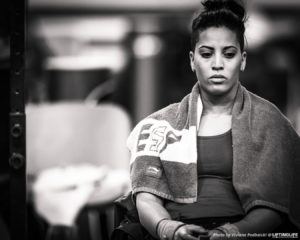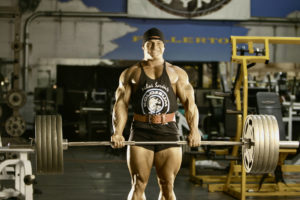
Practical ways to prepare your body for maximum performance
Strength Sensei CP
In his book Speed Trap, Charlie Francis said monitoring central nervous system recovery is one of the keys to achieving success with elite sprinters. It’s also essential for achieving maximum strength and power gains in the weightroom.
Strength coaches and strength/power athletes must understand that the nervous system takes five to six times longer to recover than the muscular system. This is why elite sprinters take as long as 10 minutes between maximum sprint attempts. It’s also why weightlifters use gamesmanship during competition, such as making several weight changes, to get additional rest between attempts.
On a larger scale, athletes need to monitor their nervous system recovery between workouts to achieve the highest results in performance. An elite, sponsored athlete might be able to take advantage of blood tests to monitor their training status. However, there are simple, inexpensive ways to determine the training status of your nervous system.
One excellent test for the central nervous system is the standing vertical jump, which has been shown to predict how well an athlete will perform in a 500-meter speedskating sprint. Speedskating coach Jacques Thibault demonstrated this on the World Cup circuit while doing research for his master’s thesis. He found that a drop of as little as 2 cm from a baseline score can have disastrous effects on performance in that race.
The vertical jump can also assess the effectiveness of relative strength training methods, important for sports such as gymnastics and figure skating. If an athlete’s vertical jump stagnates or declines despite their lifts in the weightroom improving, they need to assess their training methods. They should also monitor their bodyfat, as often a decrease in jumping ability could be attributed to gaining additional bodyfat (and if this is the case, a German Body Comp phase may be in order).
 Hitting max deadlifts requires an adequately recovered nervous system. (This photo by Miloš Šarčev; lead photo by Viviana Podhaiski, LiftingLife.com)
Hitting max deadlifts requires an adequately recovered nervous system. (This photo by Miloš Šarčev; lead photo by Viviana Podhaiski, LiftingLife.com)
The vertical jump test is good, but I prefer grip strength testing that requires a handgrip dynamometer, a simple device that you squeeze to measure your grip strength. I say this because research has shown that the handgrip test is an excellent predictor of performance in judo and wrestling at the elite level.
To get a baseline measurement of your grip strength, take a grip measurement after you’ve had a few days off from training to ensure your nervous system is not fatigued. When you arise in the morning, grasp the dynamometer with your dominant hand and place your opposite foot slightly forward. Lift your dominant hand overhead, then squeeze the handgrip as hard as you can while lowering your arm slowly. Record your results. Repeat this procedure with your non-dominant hand. Record your results. These scores represent your baseline measurement, which will help you determine your nervous system readiness. Let’s move on to the next step.
Every morning, test your grip strength in both hands, as I just described. If your measurements are down by two kilos (2.2 pounds) or more per hand, you have not neurologically recovered from your previous training sessions. You may not need to skip training if you have a poor score on this test, but you may need to reduce your training volume.
Yes, it’s important to train hard, but it’s also important to train smart by monitoring the readiness of your nervous system.
